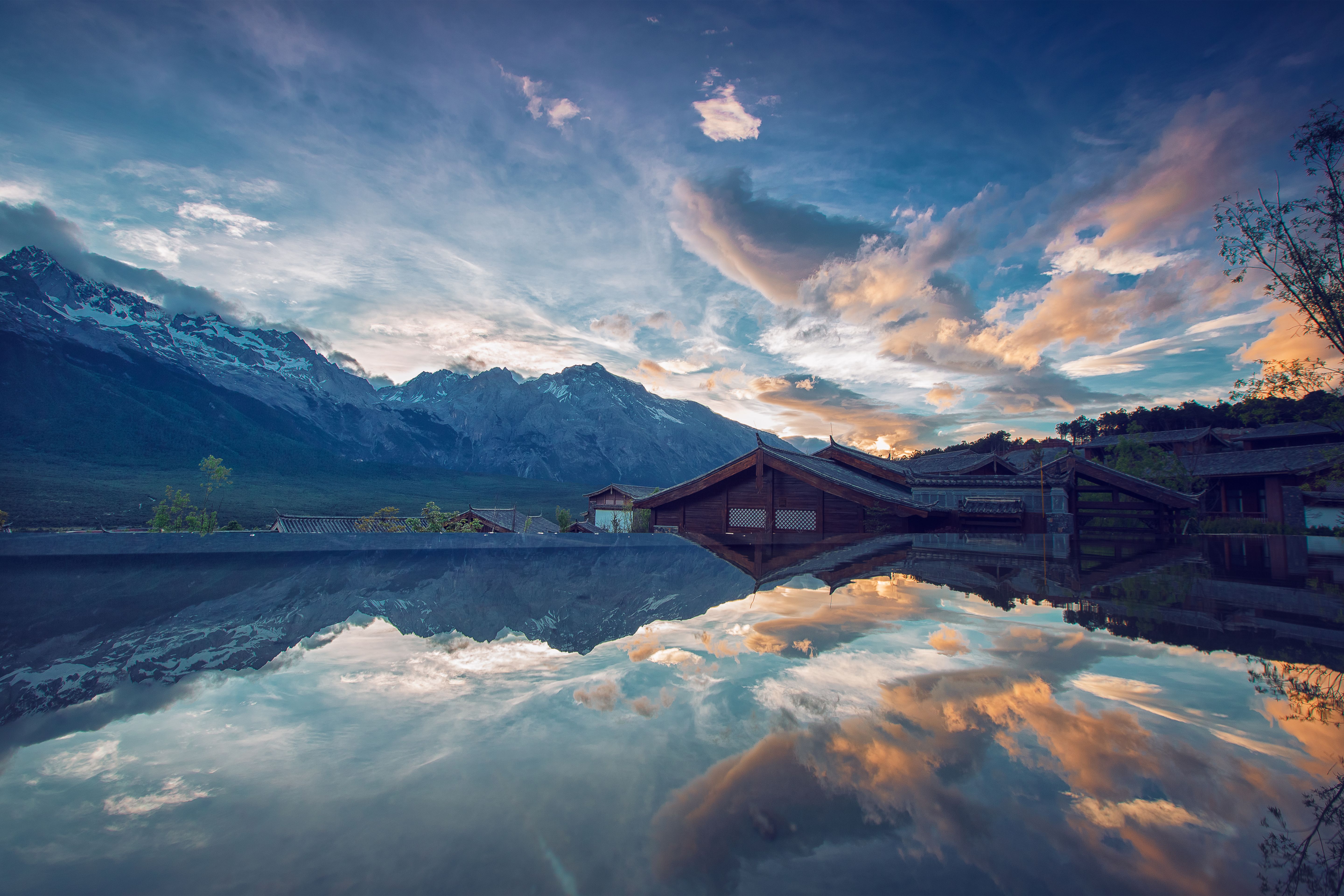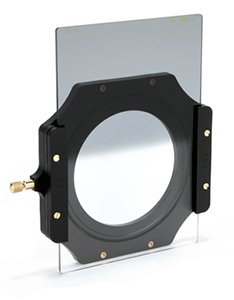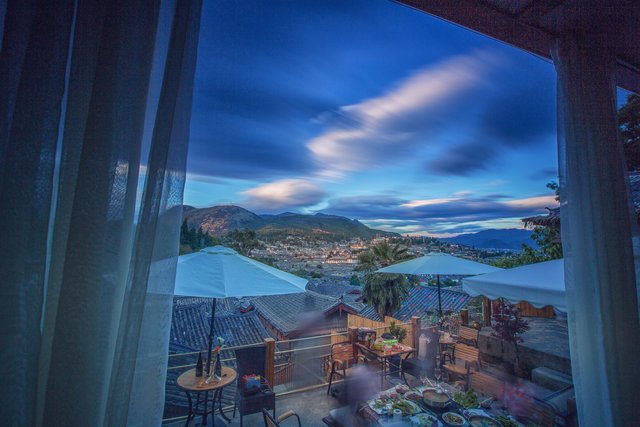How to take this photo-Graduated filter
Landscape photography is nothing mysterious but a few factors:
Timing -- most of the breathtaking photos are taken around sunrise or sunset, because of the dramatic light environment.
Luck -- There is nothing you can do but wish for a nice weather. Some serious photographer would even wait days at the same location for a perfect condition.
Strength -- Either reaching the desired location or waiting requires strength. So sometimes we would joke that photography is just a physical work.
Filter -- This is the secret weapon which makes the difference between a normal tourist photo and a wow landscape photo.
So, one of my most used filter , Graduated Filter, is what I'm going to talk about.

Camera: Canon 5D Mark III
F-stop: f/7.1
Exposure time 1/30 sec
ISO: 200
Focal length: 16 mm
The photo was taken at the bottom Jade Dragon Snow Mountain(trust me there is no dragon), which is about 3100m above the sea level. The exposure info from the camera looks normal, like something every DSLR can achieve. But behind the scene, every time when you make your practice to take such a photo you will realize a problem that the difference of brightness between the sky and land is too significant. If you give the correct exposure to the sky, then you will end up with the land very dark. Vice versa.
Now the graduated filter come into play. One type of it looks something like this:

The top darker part can block some light from getting into the lens, while the bottom lighter part can allow full transmission of the light. The black holder is used to attach the filter onto the front of the lens. A graduated filter is usually classified with 0.3, 0.6 or 0.9 stops, which means the amount of light the darker part can stop. For reference 1 stop means half the light is stopped. If you gonna start with one, then go for the 0.9 stops.

So this is me taking the photo, you can see the scene is nothing special but a filter in front of the camera to make the magic. And there are more magic like:


Although, with the latest camera and post-processing, you can sometimes achieve similar effect like this. But the filter doesn't degrade the picture quality and can always make it better.
Hope you can enjoy it as I do! @vincenthan
在我看来, 风光摄影的几个主要因素有:
时机 -- 一般日出和日落是最佳时机,那会儿的环境光能营造非常戏剧的效果。
运气 -- 摄影也是个看天吃饭的事情,有的职业摄影师,甚至会在同一个地点,看好几天老天爷的脸色。
体力 -- 这个不是搞笑,等你真的背着摄影包去翻山越岭,看日出日落的时候,就会发现,摄影没那么高大上,这其实跟搬砖一样,是个体力活。
滤镜 -- 这个是风光摄影的秘密武器,可以说,用滤镜是进阶风光摄影的第一步。
上面是一张我在玉龙雪山山脚拍的照片,其中就用到了渐变滤镜。因为通常情况下,天空的亮度和地面会有很大差异,尤其日落,所以那会儿你没法同时把天空和地面拍好,这种感受大家用手机拍照的时候,应该经常有。所以此处就需要渐变滤镜,来让天空变暗一点,但是又不影响地面的曝光。通常渐变滤镜是用0.3, 0.6, 0.9 stop来表示的。1stop意思就是滤镜中最暗的部分能挡住一半的光线。
当然,现在最新的相机配上PS,也能在没有滤镜的情况下完成类似的效果,但是滤镜是基本不影响画质的,所以它永远可以在现有基础上达到更好效果。
能用上 5D Mark III 的都是土豪。
能买几十个5D3的土豪别跟我客气呀😏
amazing
thanks!
Wow...I dont know anything about photography, but amazing photo!!
Thanks! Photography is just to capture what You want to capture.
Well you capture extremely well. Look forward to seeing more!
真开心再次见到你!请接受cn区点赞机器人 @cnbuddy 对你作为cn区一员的感谢。 @cnbuddy 很开心能够和您一起为cn区快速发展,贡献自己的力量。我的主页会定期总结cn区活动动态,欢迎围观。欢迎关注我们的大股东 @skenan,并注册使用由其开发的 CNsteem.com。如果我打扰到你,请回复“取消”。